Software Velocity: How to Maximize Your Team Efficiency



In the dynamic digital landscape of today, businesses are continuously seeking methods to enhance operational efficiency. A pivotal strategy in this pursuit is software velocity, a concept that transcends mere speed, focusing on strategically augmenting efficiency, productivity, and operational optimization through data-driven insights.
Software Velocity is an intricate blend of agility, collaboration, and relentless progress. It's not just about quickening development cycles; it's about integrating smart, analytics-driven approaches that enable teams to measure, assess, and enhance their workflows. This is where platforms like Keypup come into play, offering advanced analytics and insights to guide software development teams.
By embedding a Software Velocity mindset, underscored by agile methodologies, continuous integration, automated testing, and robust analytics, businesses can foster a culture of innovation and informed decision-making. Keypup, with its comprehensive analytics tools, provides invaluable insights into development processes, helping teams to not only track but also optimize their software development lifecycle.

Key takeaways:
Software Velocity transcends traditional methodologies, representing a progressive approach that prioritizes rapid, continuous delivery of high-quality software products. This approach is defined by a suite of practices and processes aimed at streamlining software development, thereby enhancing the speed and efficiency of development cycles.
At the heart of Software Velocity is a commitment to quicker time to market, increased productivity, improved customer satisfaction, cost reduction, and heightened profitability. This commitment is actualized through agile development, continuous integration, automated testing, and, critically, the integration of advanced software development analytics tools.
These analytics tools play a pivotal role in Software Velocity. They offer deep insights into the development process, helping teams to identify and address bottlenecks, track progress, and effectively evaluate the impact of various development strategies.
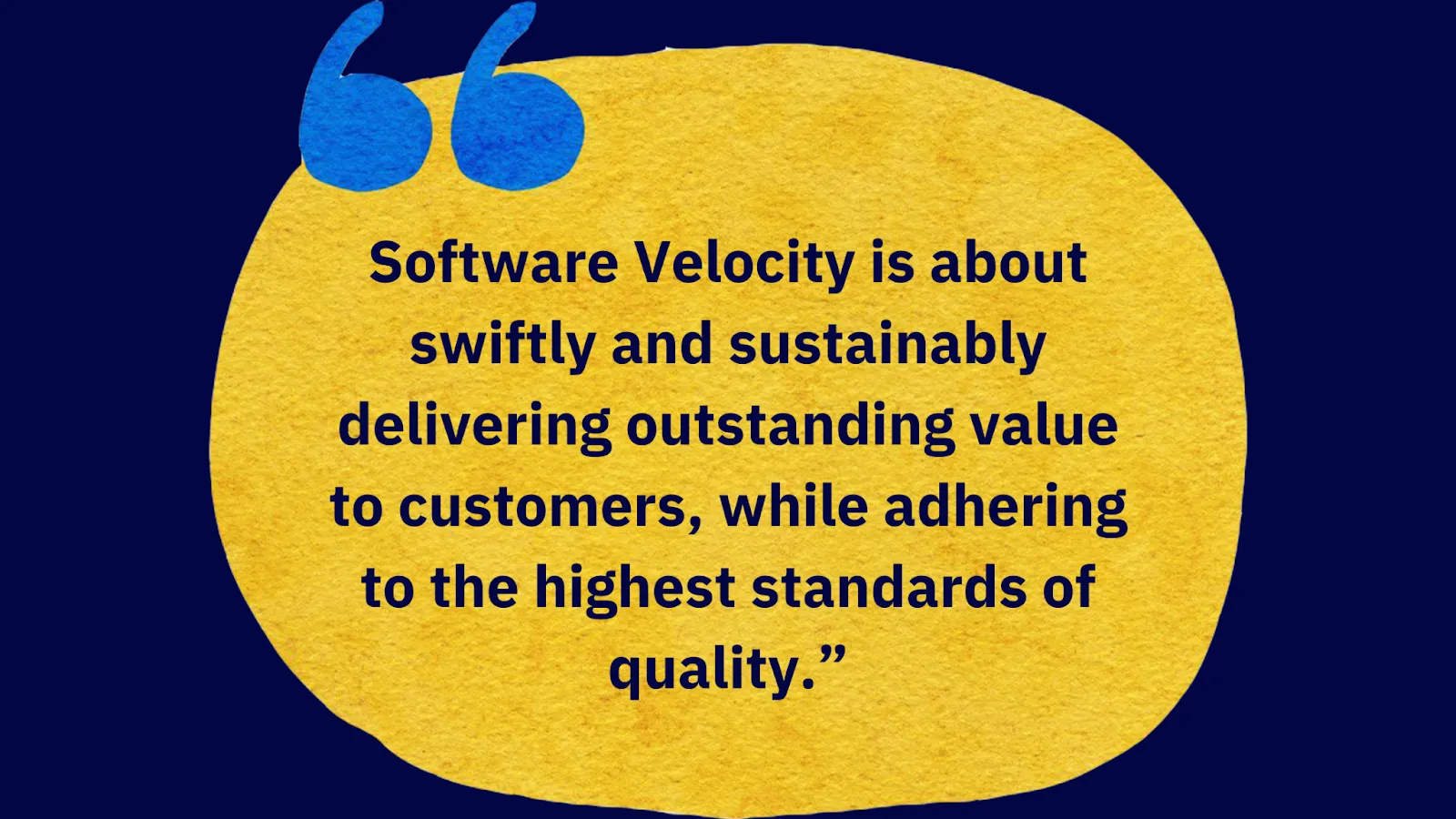
Implementing Software Velocity, especially when augmented with sophisticated analytics tools, brings several significant benefits:

In today's rapidly changing market, where customer needs and industry trends constantly evolve, the integration of Software Velocity with advanced analytics tools equips organizations to respond with agility and informed accuracy. This not only helps in meeting current market demands but also positions companies to anticipate and adapt to future trends, ensuring that their software products remain relevant and in demand.
Software Velocity is an intricate, multifaceted approach that includes several crucial components. These elements synergize to streamline development processes, accelerate time to market, and ensure the delivery of high-quality software products. Enhanced by the capabilities of advanced software development analytics tools, these components become even more effective.
Agile development, a methodology that emphasizes flexibility, collaboration, and continuous improvement, is a cornerstone of Software Velocity. It encourages teams to work in iterative cycles, adapting swiftly to changes. Integrating analytics tools in agile environments can further enhance this flexibility. These tools provide real-time data on workflow efficiency, team performance, and project progression, enabling organizations to make data-driven decisions and respond more effectively to market shifts and customer needs.
Continuous integration involves regularly merging code changes into a central repository and conducting automated tests. This process, crucial for minimizing major development issues, becomes more efficient with analytics tools. These tools offer insights into integration patterns, identify recurring issues, and help streamline the integration process. By analyzing trends and outcomes, teams can refine their integration strategies, reducing risks and improving code quality.

Automated testing is vital for accelerating the development process and ensuring product quality. When paired with analytics tools, the effectiveness of automated testing is significantly boosted. These tools can track software development patterns, highlight recurrent bugs, and suggest areas for improvement, enabling teams to optimize their testing strategies. This results in quicker identification and resolution of errors, ensuring a smoother and more efficient development cycle.
In the realm of Software Velocity, agile development, continuous integration, and automated testing are fundamental. However, their effectiveness multiplies when supported by advanced analytics tools. These tools not only streamline each component but also provide valuable insights, leading to a more refined, efficient, and productive software development process. By embracing these tools, organizations can not only meet but exceed market expectations, delivering superior software products with greater speed and efficiency.
The journey to implementing Software Velocity strategies can be challenging, but leveraging the right tools and adhering to best practices can streamline this transition. Here's how advanced software development analytics tools can be integrated into this process for successful implementation:
1. Start with a data-informed development strategy
Before launching any Software Velocity initiative, it's essential to develop a clear, data-driven strategy. This involves identifying key objectives, outlining the project's scope, and setting measurable goals based on analytics insights. Software development analytics tools can help in identifying areas of improvement and setting realistic, data-backed targets.

2. Inclusive stakeholder engagement supported by data
For Software Velocity to succeed, it requires active collaboration among all stakeholders: management, developers, IT teams, and more. Utilizing analytics tools can foster a data-centric culture, ensuring open, fact-based communication. Sharing data-driven insights with all stakeholders from the start aligns everyone toward common, objectively defined goals.
3. Enhancing agile development with analytics
Agile development, a critical component of Software Velocity, can be significantly enhanced through analytics tools. These tools provide real-time insights into team performance, project progression, and workflow efficiencies, enabling agile teams to make quicker, more informed adjustments to their processes.
4. Optimizing continuous integration with data analysis
Continuous integration (CI) becomes more effective when complemented with analytics tools. These tools can spot issues, and help optimize the CI process. This results in more efficient coding practices and early detection of potential problems.
5. Streamlining automated testing with analytics
Automated testing, pivotal for maintaining code quality, is greatly improved with analytics support. Analytics tools can track the effectiveness of testing strategies, identify common failure points, and suggest optimizations, ensuring a more robust and efficient testing process.

6. Cultivating a continuous improvement culture through analytics
Embracing Software Velocity requires an enduring commitment to continuous improvement. Analytics tools play a crucial role in this, providing ongoing insights that enable teams to evaluate and enhance their processes regularly. This fosters a culture of data-driven optimization and iterative advancements.
By integrating advanced software development analytics tools into their Software Velocity strategies, organizations can achieve a more streamlined, efficient, and effective implementation process. These tools not only provide valuable insights for better decision-making but also align various components of Software Velocity, leading to enhanced productivity and success in software development endeavors.
While the journey toward Software Velocity is replete with benefits, it is also laden with challenges. Recognizing and strategically overcoming these obstacles is crucial. Here’s how software development analytics tools can be instrumental in addressing these common challenges:
Resistance to change is a substantial barrier in adopting Software Velocity. This can be mitigated by involving team members in the transition process, supplemented by training and support centered around analytics tools. These tools can demonstrate tangible benefits through data, encouraging acceptance and understanding. Promoting open communication and collaboration, supported by clear data-driven insights, helps ensure the entire team appreciates the value of these new methodologies.

A gap in understanding Software Velocity can hinder its adoption. To bridge this gap, provide comprehensive training that includes how analytics tools can enhance each component of Software Velocity – agile development, continuous integration, and automated testing. Demonstrating how these tools simplify and improve processes can foster a deeper appreciation and adoption of Software Velocity.
Integrating Software Velocity practices into existing systems can be challenging due to varied tools and technologies. Analytics tools can offer insights into how existing systems can seamlessly incorporate software velocity practices. Conduct an integration capabilities evaluation of these tools to ensure a smoother transition.
In large organizations, the complexity of managing multiple projects can be daunting. Break down projects into smaller tasks and utilize analytics tools to manage and track progress. Establishing clear communication channels, supported by analytics, ensures cohesive project management. Implementing analytics-driven project management tools can simplify coordination and improve oversight.

The rigorous demands of continuous integration and testing can strain testing teams. Investing in analytics tools that support automated testing processes can greatly alleviate this strain. These tools enable more efficient and thorough testing, reducing the workload on testing teams and ensuring comprehensive code quality checks.
Navigating the challenges of software velocity becomes more manageable with the right analytics tools. These tools not only provide critical insights for better decision-making but also streamline and enhance the adoption and implementation of software velocity. With a well-structured approach, underpinned by analytics, organizations can successfully transition to software velocity, yielding improved productivity, faster time to market, and optimized operations.
To effectively evaluate and enhance software velocity, it’s essential to focus on specific metrics that directly reflect the speed and efficiency of software delivery. Among the most pertinent metrics are Cycle Time, Lead Time for Changes, and Deployment Frequency.



By consistently measuring and analyzing these metrics, organizations can gain deep insights into their software development process. This data-driven approach allows for the identification of bottlenecks and areas for improvement, ultimately optimizing software velocity for faster and more efficient delivery.
To effectively measure and track software velocity, a range of specialized tools can be utilized, each offering distinct functionalities:
Using these tools, organizations can gain a comprehensive view of their software development processes, leading to better-informed decisions and optimized operations.
Software velocity is revolutionizing operations in various industries, enabling organizations to enhance processes, expedite time to market, and improve overall operations. Here's how different industries, including technology, are benefiting:
In the fast-evolving technology sector, software velocity is critical for staying ahead of rapid innovation cycles and ever-changing customer expectations. Companies can leverage software velocity to develop cutting-edge products, improve software deployment processes, and rapidly adapt to new technologies. For instance, technology firms can accelerate the development of cloud-based solutions or AI-driven tools, ensuring they remain at the forefront of innovation.

The finance industry, being highly regulated, needs agility to adapt to market shifts and customer demands. Software velocity aids in streamlining processes like loan processing or risk management, leading to quicker decisions and improved service delivery.
In healthcare, software velocity enhances efficiency, reduces costs, and improves care quality. Healthcare organizations can develop applications for patient data tracking, appointment management, or even automated medical procedures, providing faster, personalized care.
With the rise of online shopping, retail organizations use software velocity to enhance e-commerce platforms, creating personalized shopping experiences and optimizing order fulfillment processes.

For manufacturers, software velocity accelerates product development and streamlines supply chain management, aiding in inventory tracking, logistics coordination, and production line automation.
As digital learning grows, educational institutions can use software velocity to optimize operations and enhance student learning experiences through applications for data management, attendance tracking, and personalized learning materials.
In conclusion, software velocity offers significant benefits across various industries, including technology, enabling businesses to stay competitive in a rapidly evolving digital landscape and unlocking new growth opportunities.
In the realm of software velocity, prioritizing security is crucial. Integrating software development analytics tools can significantly bolster security measures, addressing potential vulnerabilities and safeguarding data. Here are key strategies, underpinned by analytics:
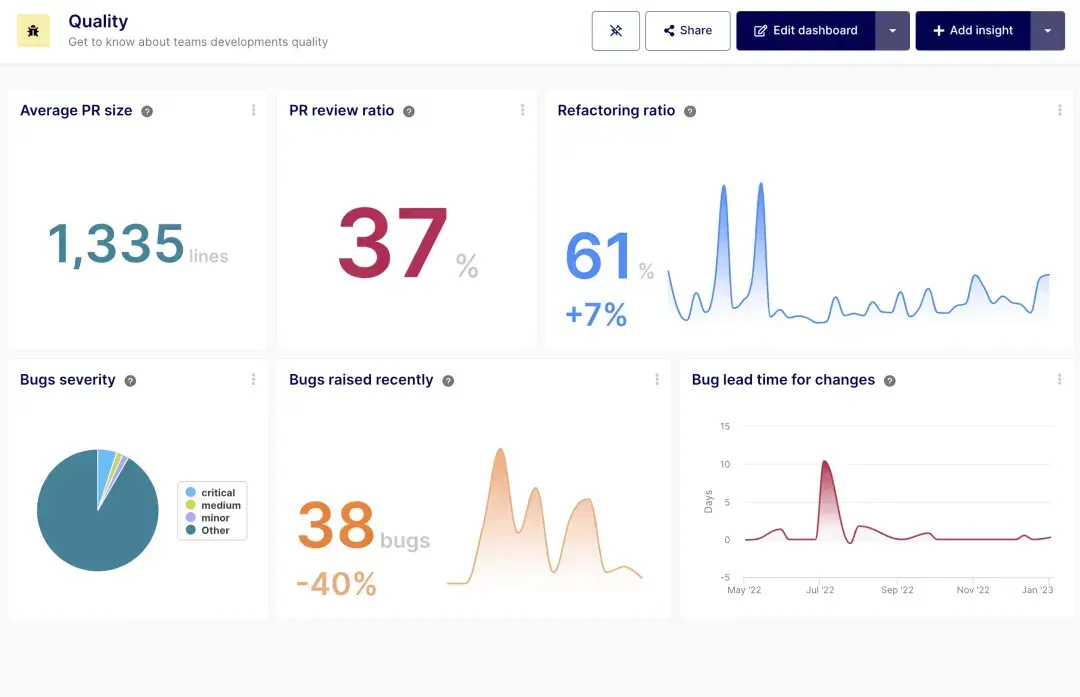

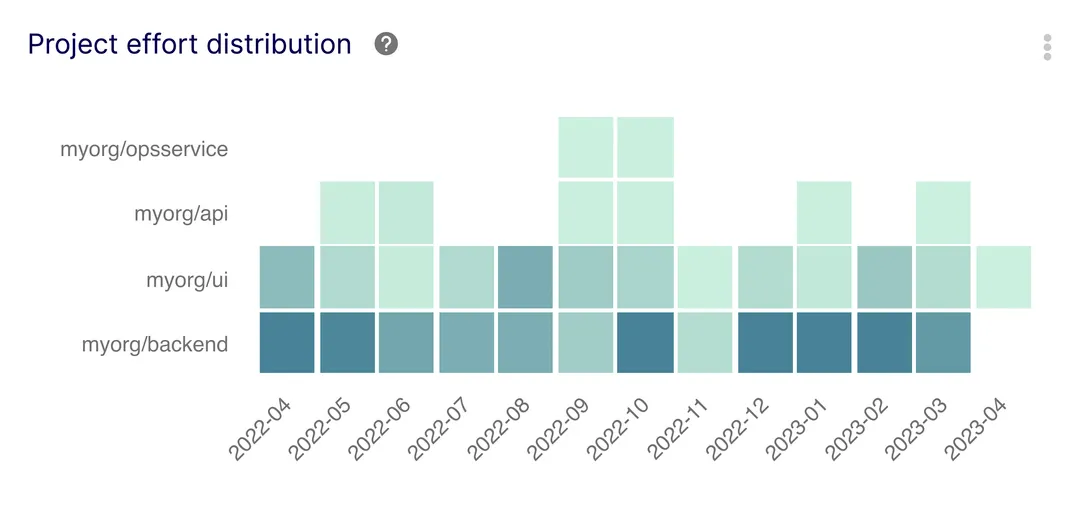
By weaving in software development analytics tools into these practices, organizations can significantly enhance the security aspect of their software velocity initiatives, ensuring a robust and secure development environment.
Embracing continuous improvement is a key tenet of software velocity, and software development analytics tools are vital in facilitating this principle. Organizations should foster a culture of ongoing learning and growth, leveraging analytics to continually optimize operations.
Mark Twain's adage, “Continuous improvement is better than delayed perfection,”
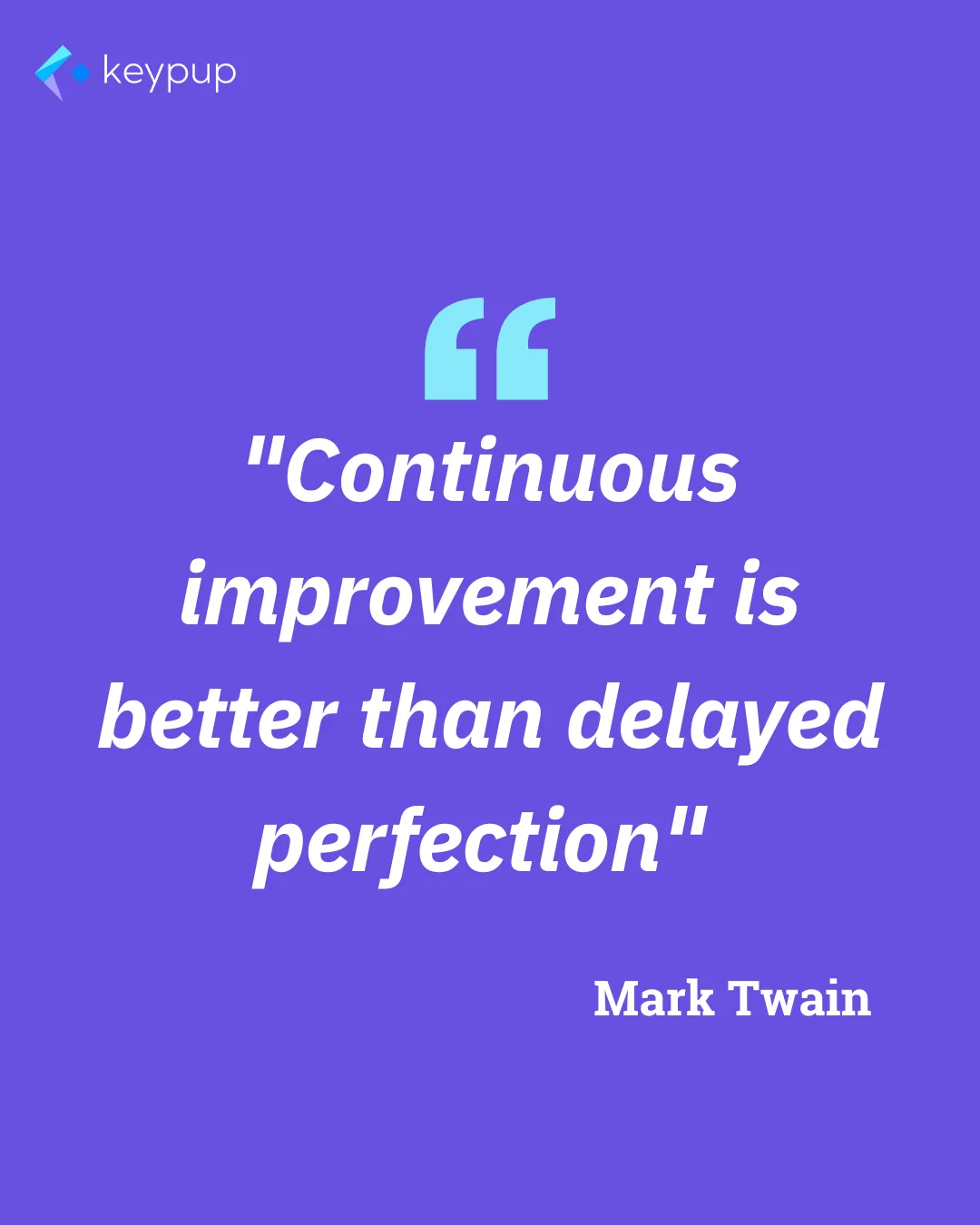
rings particularly true in this context. By integrating software development analytics into their continuous improvement strategies, organizations can maintain a competitive edge, aligning closely with the evolving demands of the digital landscape.
Building a skilled workforce is crucial for software velocity, requiring investment in comprehensive training and development programs. These programs should address various areas pertinent to software development:

Benefits of comprehensive training:
By offering well-rounded training and development programs, organizations can equip their teams with the necessary skills and knowledge for successful software velocity implementation, ensuring continuous growth and adaptation to industry changes.
As technology evolves, so does the potential of software velocity. Organizations that incorporate emerging trends, including software development analytics, can gain a significant competitive edge:
By incorporating these trends organizations can unlock the full potential of software development, staying ahead of the competition in their industries. The future of software velocity, enriched with data-driven insights, holds exciting possibilities for growth and innovation.


In today's fast-paced digital world, maximizing efficiency and boosting productivity is crucial for staying ahead in the competitive landscape. Software velocity offers a powerful approach to achieving unparalleled results by optimizing operations and streamlining processes.
Through software velocity strategies, organizations can implement key components such as agile development, continuous integration, and automated testing, which contribute to overall efficiency and effectiveness. Additionally, collaborative tools play a vital role in facilitating communication and project management, while enhancing security through best practices is critical for protecting against potential threats.
Measuring and tracking software velocity progress is necessary for evaluating its impact and ensuring continuous improvement. Gathering feedback, conducting regular retrospectives, and implementing iterative enhancements are all strategies for continuous improvement and optimization.
Training and development programs are essential for building a skilled and knowledgeable workforce that can successfully implement software velocity. By embracing software velocity and continuously improving processes, organizations can maximize their potential and realize its benefits.
As technology continues to evolve, the potential of software velocity keeps expanding. Emerging practices such as DevOps and Value Stream Management are expected to further enhance the benefits of software velocity. By staying informed of these trends and continuously improving processes, organizations can stay ahead and achieve unparalleled results.
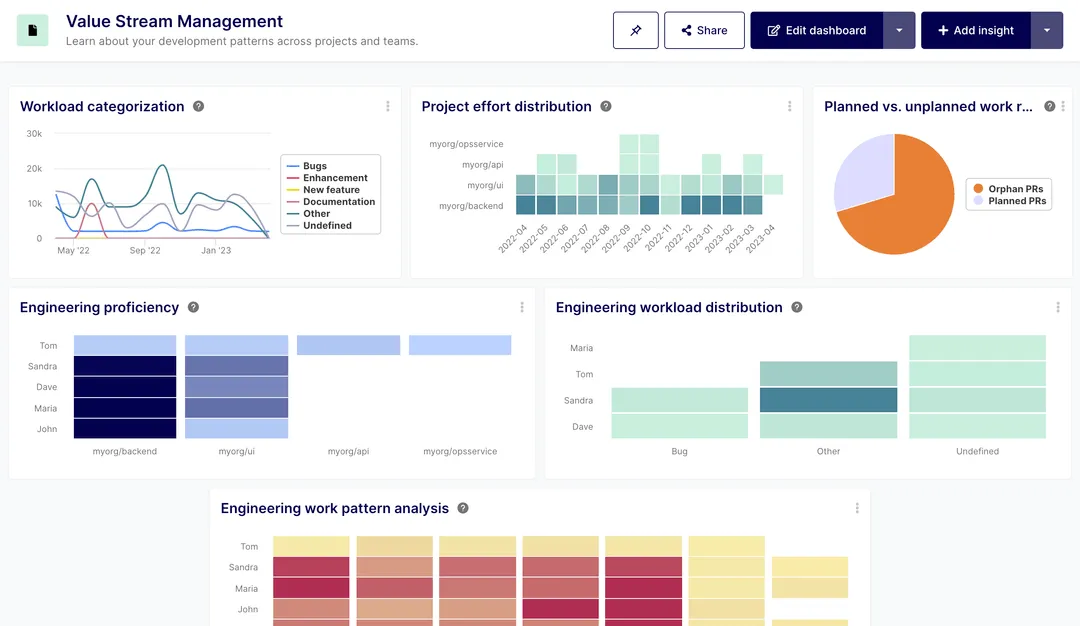

What is software velocity?
Software velocity is an approach that focuses on enhancing software development efficiency and productivity through agile methodologies, continuous integration, automated testing, and data analytics.
How do analytics tools enhance software velocity?
Analytics tools provide insights into development processes, helping teams identify bottlenecks, optimize workflows, and make data-driven decisions.
What are some key benefits of software velocity?
Key benefits include increased efficiency, faster software releases, improved customer satisfaction, cost reduction, and greater profitability.
Can software velocity be applied across different industries?
Yes, software velocity is applicable and beneficial across various industries including technology, finance, healthcare, retail, manufacturing, and education.
What role does employee training play in software velocity?
Comprehensive training in agile methodologies, automated testing, and analytics is crucial for building a workforce capable of effectively implementing software velocity strategies.
What emerging trends are shaping the future of software velocity?
Trends like DevOps integration, analytics, AI and machine learning, cloud-native architecture, and microservices are driving the evolution and enhancement of software velocity.
How does software velocity address security concerns?
Security in software velocity is addressed through secure coding practices, regular security testing, compliance with data protection regulations, and the principle of least privilege, all supported by analytics tools.
Why is continuous improvement important in software velocity?
Continuous improvement ensures that organizations adapt to changing market conditions and technology, maintaining their competitive edge and effectiveness in software development.